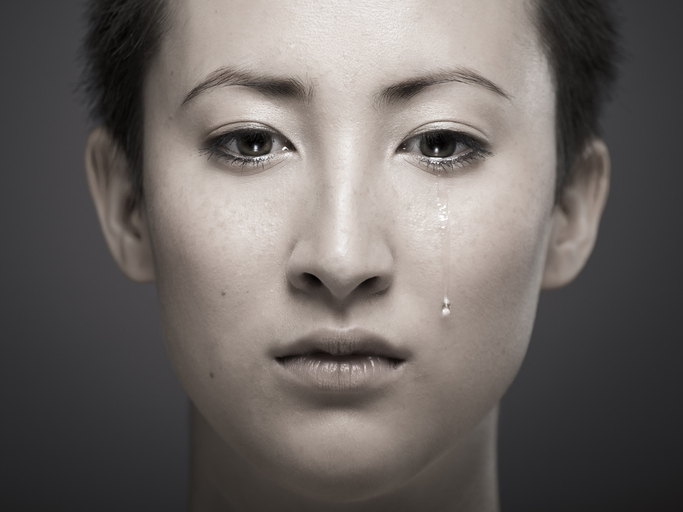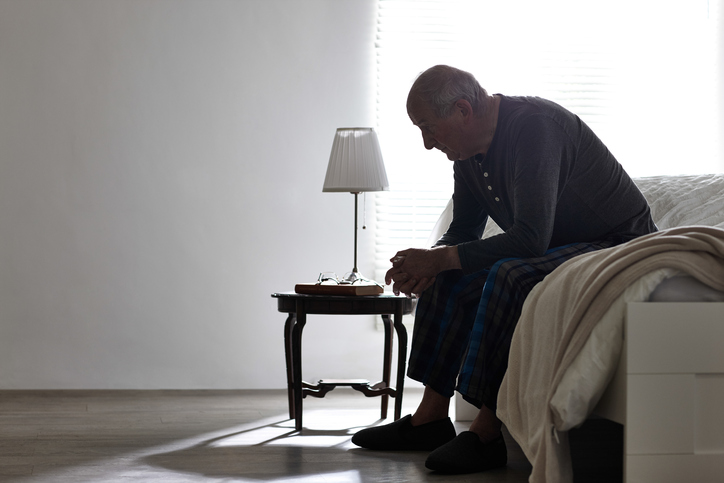 Depression is a serious, but common, condition. It often causes people to feel sad or empty for long periods of time. It can also affect one’s thinking patterns and physical health. In some cases, depression can lead people to consider suicide.
Depression is a serious, but common, condition. It often causes people to feel sad or empty for long periods of time. It can also affect one’s thinking patterns and physical health. In some cases, depression can lead people to consider suicide.
- What Is Depression?
- What Depression Is Not
- What Causes Depression
- Subtypes of Depression
- Comorbid Psychological Issues
- Depression in Men and Women
- Depression in Children
- Depression From the Outside
- Getting Help
What is Depression?
Depression is the most common cause of disability in the United States. One in 10 adults report experiencing it. Most people have their first bout of depression in their late teens or early twenties.
Depression’s symptoms can vary from person to person. Someone’s gender, culture, or age may change how they experience depression. Yet most forms of depression include these common symptoms:
- Frequent crying and bouts of sadness
- Feeling hopeless or worthless
- Getting too much or too little sleep
- Anxiety
- Anger
- Difficulty enjoying activities one used to like
- Unexplained physical ailments such as headaches or muscle pain
- Difficulty concentrating
- Changes in weight or eating habits
- Thoughts of suicide
A person with depression likely has trouble dealing with daily stresses. Sometimes the simplest activities—getting out of bed, bathing, and dressing—can feel impossible. Such struggles might make people feel helpless or alone. Even when something good happens, depression can cast a cloud of negativity over the experience.
People with depression often feel anger, shame, and irritation. Sometimes these emotions can show up in the body as aches or nausea. These feelings can also lead to weepiness.
Other times, depression causes people to feel emotionally “numb.” It is common for people to feel as if they never have energy. In severe cases, a person may not care if they live or die.
What Depression is Not
There are many myths surrounding therapy. Though it is important to know what depression is, it can be equally important to know what depression is not.
 Depression is not simple sadness. Most people get upset when life doesn’t go their way. But someone with depression can feel so bad they struggle to do everyday activities like eat or bathe. To count as depression, the sadness must be a constant, long-lasting feeling.
Depression is not simple sadness. Most people get upset when life doesn’t go their way. But someone with depression can feel so bad they struggle to do everyday activities like eat or bathe. To count as depression, the sadness must be a constant, long-lasting feeling.
Depression is not a sign of weakness. Although depression can sap one’s energy or motivation, having the condition does not meant one is lazy. In fact, many people with depression put forth double the effort to simply get through their day.
Depression is not forever. People with depression can feel hopeless about recovery, especially if they’ve had the condition for a long time. Yet most forms of depression are very treatable. There are many therapies used to treat depressive symptoms. A mental health practitioner can help you decide which type best fits your needs.
What Causes Depression
Depression can be caused by one’s body or one’s circumstances. Sometimes it can be caused by a mixture of both.
Most mental health experts agree brain chemistry plays a major role in depression. The brain has chemicals called dopamine and serotonin. These chemicals affect our ability to feel pleasure and well-being. If the brain does not make enough of these chemicals, or if it doesn’t process them right, depression can result.
But no person is an island. Just as brain chemistry can affect life, life can cause changes in the brain. Any stressful or traumatic event can contribute to depression. Common triggers include divorce, financial instability, chronic illness, social isolation, bullying, and domestic violence.
Depression is not to be confused for the typical mourning process. Grief after loss is normal, and it usually fades over time. One’s sadness or guilt is often limited to thoughts of the deceased. But depression’s symptoms tend to be persistent and less tied to any specific thought.
Subtypes of Depression
The Diagnostic and Statistical Manual of Mental Disorders (DSM-V) lists eight main types of depression. Each subtype has its own criteria for severity, duration, mood changes, and behavior. The subtypes include:
- Disruptive mood dysregulation (DMDD): Generally diagnosed in children and adolescents between the ages of 6 and 18. It involves frequent temper tantrums that are not appropriate for the child’s age or situation.
- Major depression: The most common subtype. The symptoms are usually severe and impact daily life.
- Persistent depression or dysthymia: A depressed mood that lasts for over two years.
- Premenstrual dysphoria: Symptoms appear the week before one’s menses, then become minimal after menses.
- Substance/medication-induced depression: Depression that occurs during or soon after one is exposed to a substance. It could also occur during withdrawal.
- Depression related to another medical condition: Depression caused by the physiological effects of another medical condition.
- Other specified depressive disorders: This diagnosis applies when someone has depressive symptoms, but they do not qualify for any other subtype. A clinician will specify the reason the condition does not meet the criteria. The person may not have enough symptoms, or the depressive episode may have been too brief.
- Unspecified depression: This diagnosis is used when depressive symptoms do not meet the full criteria for a specific type, but the clinician does not specify why. A clinician may use this distinction when they do not have enough information to make a specific diagnosis (such as in an emergency room).
Depression subtypes can be described in more detail by adding specifiers. A depressive subtype might be characterized by:
- Seasonal pattern: in which episodes occur at a certain time of year
- Peripartum onset: when symptoms occur during or immediately after pregnancy
- Anxious distress: including worry and restlessness
- Catatonia: strange movements or a lack of movement
- Mixed features: such as increased energy and inflated self-esteem
- Melancholic features: such as loss of pleasure, weight loss, and excessive guilt
- Atypical features: such as mood reactivity, weight gain, and hypersomnia
- Psychotic features: such as delusions and hallucinations
Comorbid Psychological Issues
Depression can occur on its own or with other mental health concerns. When depression presents alongside another diagnosis, the conditions are called “comorbid.”
Of all the pediatric mental health concerns, DMDD has the highest rates of comorbidity with other mental health diagnoses. It often overlaps with oppositional and defiant behavior. Major depression can co-occur with substance abuse issues, obsessive-compulsive behavior, and panic attacks. Those with persistent depression have a higher risk for anxiety and substance abuse. Substance/medication-induced depression can be comorbid with paranoia, gambling addiction, and antisocial personality.
In the case of depression related to another medical condition, health issues are inherently part of the diagnosis. However, people with this type of depression are not necessarily prone to other mental health issues. Individuals with health conditions can experience depression unrelated to their medical diagnosis. Someone might have been living with depression before they developed a health concern.
Some mental health concerns, such as anxiety, are commonly linked to depression. Anxiety/depression comorbidity is linked to slower recovery and greater disability. Depression can also be a primary characteristic of bipolar, schizophrenia, and posttraumatic stress disorder (PTSD). Survivors of childhood abuse face a high likelihood of experiencing depression.
Depression is associated with various types of substance abuse, especially alcohol. People may self-medicate to manage depressive symptoms such as insomnia. Other individuals, especially teens, may use substances as part of sensation-seeking behavior. Even if the drugs offer short-term relief, substance abuse can cause serious harm over time. Some substances, such as alcohol, can even cause depression’s symptoms to worsen.
Depression in Men and Women
Depression is diagnosed more often in women than in men. Some researchers guess this is because men are less likely to seek treatment. Some men believe talking about their feelings would make them look “weak” or “unmanly,” so they avoid therapy. Researchers also believe men are diagnosed less because their symptoms look different.

Men with depression are more likely to show anger than sadness. They tend to have more sleep difficulties and fatigue symptoms than women. Men often cope through escapist behaviors like binge drinking or sexual affairs.
Women with depression are more likely to attempt suicide. They are also more likely to experience certain forms of depression like premenstrual dysphoria (PMDD). PMDD is when someone experiences severe depression symptoms before their period. The symptoms improve once the period begins. They may even disappear for the rest of the menstrual cycle. (Transgender men may experience PMDD, although research suggests testosterone therapy reduces depressive symptoms.)
Depression in Children
Around 2% of children ages 6-12 have depression. That rate jumps to around 7% for teenagers. Estimates say up to 60% of youth with depression are not getting treatment.
Some children may inherit abnormalities in brain chemistry from their parents. These abnormalities could make kids more likely to share their parents’ depression. If an adult’s depression affects their parenting, the child may learn certain behaviors and attitudes. They may develop depression as a response to stress.
Depression From the Outside
Depression doesn’t simply affect the individual—it can also impact that person’s loved ones. Supporting a person with depression can be difficult. The person may not accept comfort, claiming they do not deserve love. Symptoms of lethargy or irritability can put further strain on a relationship. Loved ones may feel frustrated or confused when their support does not “cure” the depression.
A therapist can help loved ones learn how to best support the individual with depression. Individual therapy can be a safe space for loved ones to privately sort through their own feelings. Romantic partners may consider couples counseling. Parents and children can try family therapy.
Getting Help
Depression is a very treatable condition. If you want to start therapy immediately, you can find a therapist near you who specializes in depression. Remember, you don’t need to be in a crisis to get help.
If you or a loved one are having thoughts of suicide, you can always call 911 and go to your local emergency room. You can also call the National Suicide Prevention Lifeline, which is 1-800-273-8255.
References:
- American Psychiatric Association. (2013). Diagnostic and statistical manual of mental disorders (5th ed.). Arlington, VA: American Psychiatric Publishing.
- An estimated 1 in 10 adults report depression. (2011, March 31). Centers for Disease Control and Prevention. Retrieved from http://www.cdc.gov/features/dsdepression
- Anxiety and depression in children. (n.d.) Anxiety and Depression Association of America. Retrieved from https://adaa.org/living-with-anxiety/children/anxiety-and-depression
- Depression. (n.d.). Anxiety and Depression Association of America. Retrieved from http://www.adaa.org/understanding-anxiety/depression
- Godecke, K. (2017). Substance and medication induced mood disorders. University of Utah Psychiatric Department. Retrieved from https://healthcare.utah.edu/echo/docs/2017-11-16%20Medication%20Induced%20Mood%20Disorders.pdf
- Harold, G. T., Rice, F., Hay, D. F., Boivin, J., van, d. B., & Thapar, A. (2011). Familial transmission of depression and antisocial behavior symptoms: Disentangling the contribution of inherited and environmental factors and testing the mediating role of parenting. Psychological Medicine, 41(6), 1175-85. doi:http://dx.doi.org/10.1017/S0033291710001753
- Hirschfeld, R. M. (2001). The comorbidity of major depression and anxiety disorders: Recognition and management in primary care. Primary care companion to the Journal of Clinical Psychiatry, 3(6), 244-254. Retrieved from https://www.ncbi.nlm.nih.gov/pmc/articles/PMC181193
- Male depression: Understanding the issues. (2016, May 17). Mayo Clinic. Retrieved from https://www.mayoclinic.org/diseases-conditions/depression/in-depth/male-depression/art-20046216
- Monteith, L. L., & Pettit, J. W. (2011). Implicit and explicit stigmatizing attitudes and stereotypes about depression. Journal of Social and Clinical Psychology, 30(5), 484-505 doi:http://dx.doi.org/10.1521/jscp.2011.30.5.484
- Moussavi, S., Chatterji, S., Verdes, E., Tandon, A., Patel, V., & Ustun, B. (2007). Depression, chronic diseases, and decrements in health: Results from the World Health Surveys. The Lancet, 370(9590), 851-858. Retrieved from https://www.sciencedirect.com/science/article/pii/S0140673607614159
- O'Connor, R. (2001). Active treatment of depression. New York, NY: Norton
- O'Grady, M. A., Tennen, H., & Armeli, S. (2010). Depression history, depression vulnerability, and the experience of everyday negative events. Journal of Social and Clinical Psychology, 29(9), 949-974. doi:http://dx.doi.org/10.1521/jscp.2010.29.9.949
- Sachs-Ericsson, N., Kendall-Tackett, K., & Hernandez, A. (2007). Childhood abuse, chronic pain, and depression in the National Comorbidity Survey. Child Abuse & Neglect, 31(5), 531-547. Retrieved from https://www.sciencedirect.com/science/article/pii/S0145213407000889
- Teichman, M., Barnea, Z., & Rahav, G. (1989). Sensation seeking, state and trait anxiety, and depressive mood in adolescent substance users. International Journal of the Addictions, 24(2), 87-99. Retrieved from http://www.tandfonline.com/doi/abs/10.3109/10826088909047277
- Transgender & PMDD. (2017, April 6). Gia Allemand Foundation. Retrieved from https://giaallemandfoundation.org/transgender-pmdd


